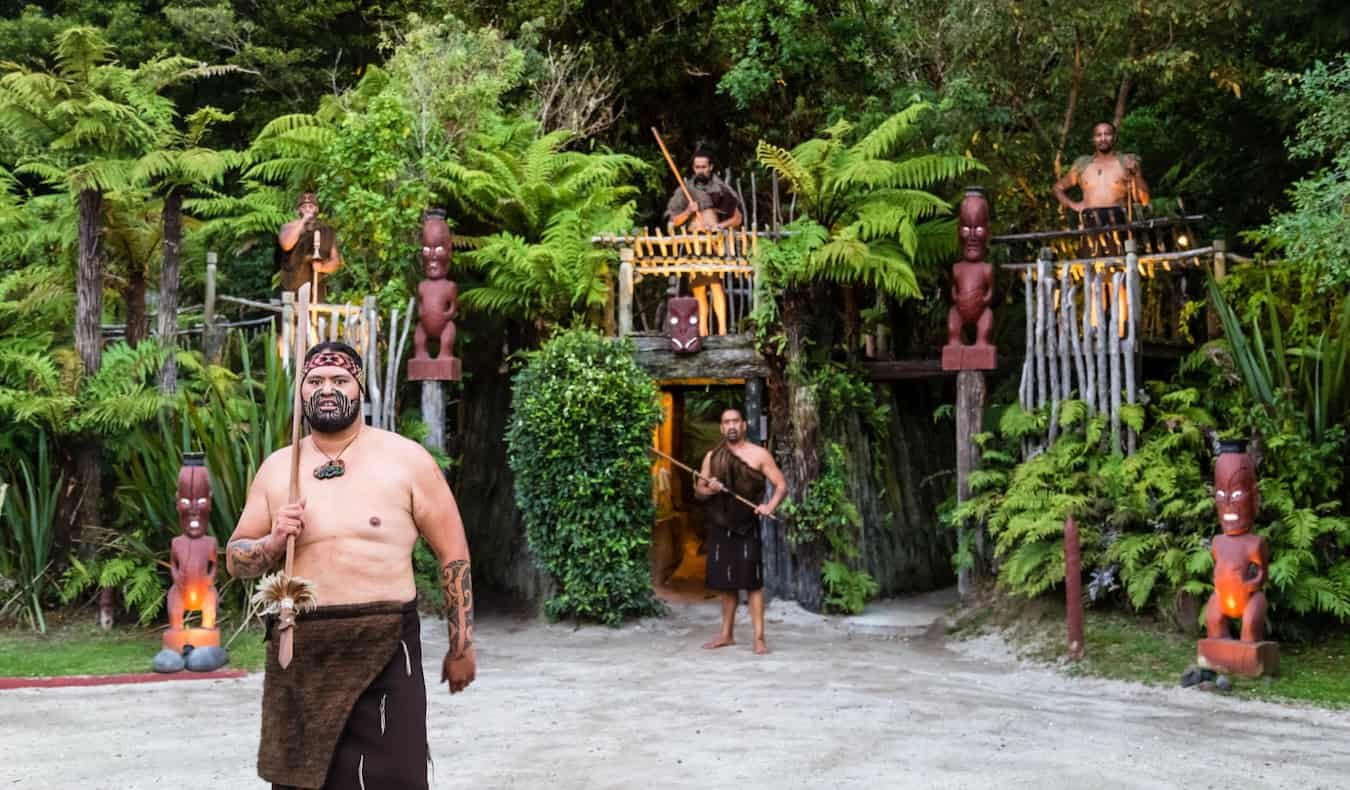I’ve been fascinated by Maori culture ever since I watched the movie “Whale Rider” (it’s one of my favorite travel movies). I’m intrigued by their history, cool tattoos, dancing, beliefs, and generally relaxed demeanor.
The History of the Maori
The Maori are a warrior race and are famous for never having been defeated by the English settlers, a fact they cherish greatly and are always happy to share. The Maori came to New Zealand from Polynesia in the 13th century, arriving in waves in large ocean-going canoes ranging from 20 to 40 meters in length. They populated the islands over time, living off the abundant landscape. European contact occurred in the 17th century, which eventually led to conflict, including internal conflicts among the Maori. Disease also took a toll. By the 1870s, influenza, measles, and smallpox killed anywhere from 10% to 50% of the Maori population. By the 19th century, the Maori population had almost been cut in half. It was only with the signing of the Treaty of Waitangi, a historical document that gave some sovereignty over the land back to the Maori, that relations between colonists and the Maori began to improve. At present, there are around 900,000 Maori in New Zealand, making up almost 20% of the population. Even today, the Maori people continue to face social and economic barriers. Over 50% of the country’s prison population are of Maori descent, and Maori currently have a lower life expectancy compared to other groups in the country (on average, Maori men and women die 7 – 8 years sooner).
Interesting Facts About the Maori
Here are a few facts about the Maori that I found fascinating and inspired me to learn more about the people and their history: The Maori language is known as “Te Reo” (though it’s often just referred to as “Maori”). It was the dominant language in New Zealand until the 1860s. Before battle, the Maori would perform a dance known as a “Haka” (which you’ll see at the cultural show). Until Europeans arrived, the Maori had no written language. Their history and traditions were passed down orally. Tattooing is a huge part of Maori culture. Traditionally, tattoos were used to depict a person’s status or rank. Traditional Maori food (known as “Hangi”) is slow-cooked underground, using the geothermal geysers that are common in New Zealand. To access the Maori meeting ground (“Marae”), you need to be welcomed through a “Powhiri.” This involves a challenge by a warrior, as well as chanting and singing. Visitors would have to show that they come in peace in order to be allowed entry.
Where to See Maori Cultural Show in New Zealand
During my first visit to New Zealand, I was determined to learn more about the Maori. The city of Rotorua is one of the best places to learn. There are a variety of cultural shows and educational tours in the area. A Maori in the Bay of Islands even told me that if I was going to learn about the Maori, this area would be the easiest for me to do it in. Not only are there some amazing cultural shows here, but you can visit some traditional villages and explore the geysers that dot the landscape. It’s an important place in Maori culture and history, making it the perfect place to learn more and take in a show. I always try to fit in a visit whenever I return to New Zealand. The cultural tours all are quite similar (some are smaller, some have better food, some are different lengths), but you learn and see a lot of the same stuff. I went with the Te Pa Tu tour (Previously Tamaki Maori Village) and I was thoroughly impressed. It’s consistently rated not only one of the best shows in the country but one of the best in the world. The show provides an introductory look at Maori life, history, and culture. It’s essentially an entertaining introduction to how they have lived and survived over the past few centuries. Cultural shows last about four hours and include a traditional four-course meal, seasonal ceremonies, and other performances in their forest amphitheater. Tickets cost 260 NZD per person with shows several times a week (daily in the high season) at 6 pm. They last around 3.5 hours. Another option for a cultural show in Rotorua is Mitai Maori Village. It’s the same sort of experience, and most people say it’s just as good. Tickets cost 155 NZD, with shows also starting at 6 pm and lasting 3 hours. That being said, while the cultural show was interesting, the food great, and the music entertaining, it’s definitely an experience that caters to tourists. If you really want to get a deeper sense of Maori culture, you’ll want to also visit the Rotorua Museum. You can learn a bit more about the Maori here and see some important historical artifacts as well. Note: it’s currently under renovation for damages sustained during an earthquake. They still offer some tours and programs, so check what’s going on before you visit. If you can’t attend a cultural show in Rotorua, consider seeing one in Auckland or the Bay of Islands (where you can also visit the Waitangi Treaty Grounds where an important treaty between the British and the Maori was signed). If you can’t make it to Rotorua, The Museum of New Zealand Te Papa Tongarewa in Wellington is another great place to learn more about the history and culture of the Maori.



